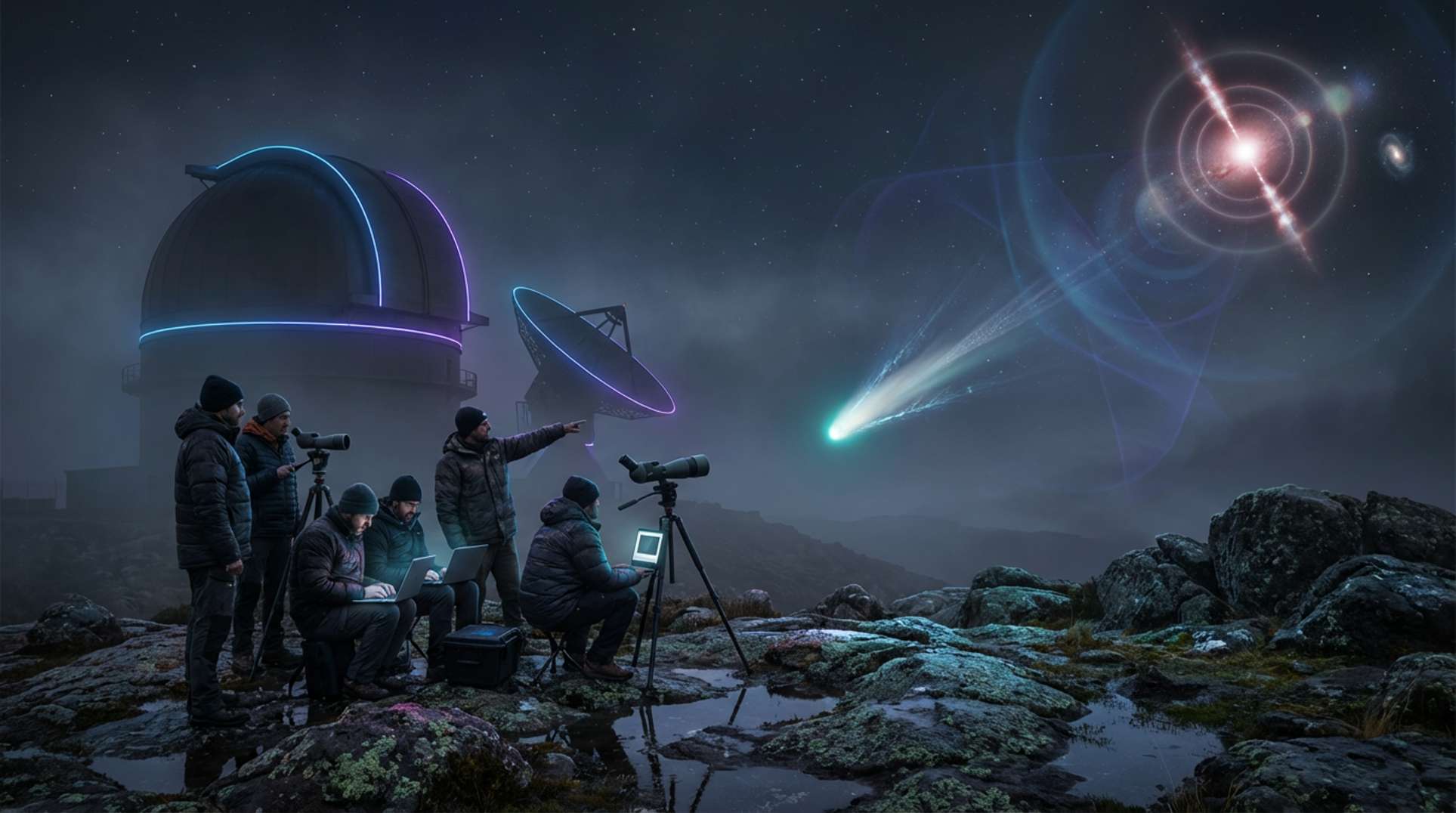Mystery investigations have always fascinated people. From ancient times to today, the quest to unravel the unknown has evolved with new techniques and technologies. This article explores the history, famous cases, and modern methods that shape the world of mystery investigations.
Key Takeaways
- Mystery investigations have evolved significantly from ancient methods to modern technologies.
- Famous unsolved mysteries like the disappearance of Amelia Earhart and the Zodiac Killer continue to intrigue people.
- Advanced techniques such as DNA profiling and forensic analysis play crucial roles in solving mysteries.
- The media has a profound impact on public perception and the progress of mystery investigations.
- Collaborative efforts and international cooperation are vital for solving complex mysteries.
The Evolution of Mystery Investigations
Historical Context
Mystery investigations have a rich history, dating back to ancient civilizations. Early detectives, often depicted in detective fiction, relied on keen observation and logical reasoning to solve crimes. These early methods laid the groundwork for modern investigative techniques.
Technological Advancements
The advent of technology revolutionized mystery investigations. The introduction of fingerprint analysis, forensic science, and digital databases transformed how detectives approached cases. Technological advancements have made it possible to solve crimes that were once considered unsolvable.
Modern-Day Practices
Today, mystery investigations are a blend of traditional methods and cutting-edge technology. Investigators use a combination of forensic analysis, psychological profiling, and surveillance to unravel complex cases. The integration of technology and traditional techniques ensures a comprehensive approach to solving mysteries.
Famous Unsolved Mysteries
Amelia Earhart, a pioneering aviator, vanished over the Pacific Ocean in 1937. Despite extensive searches, no conclusive evidence has been found. Her disappearance remains one of aviation’s greatest mysteries. Various theories suggest she crashed into the ocean, was captured by the Japanese, or lived on a deserted island.
The Zodiac Killer terrorized Northern California in the late 1960s and early 1970s. This unidentified serial killer claimed to have murdered 37 people, though only seven confirmed victims are attributed to him. The Zodiac sent cryptic letters to newspapers, taunting police and the public. Despite numerous suspects and ongoing investigations, the killer’s identity remains unknown.
In 1959, nine Russian hikers died mysteriously in the Ural Mountains. Their tent was found ripped open from the inside, and their bodies scattered, some with severe injuries. Theories range from an avalanche to secret military tests, but no definitive explanation has been confirmed. This incident continues to baffle experts and enthusiasts alike.
Techniques in Mystery Investigations
Mystery investigations have evolved significantly over the years, incorporating a variety of techniques to solve complex cases. These methods range from traditional forensic analysis to modern surveillance and intelligence gathering, each playing a crucial role in unraveling the unknown.
Forensic Analysis
Forensic analysis is the backbone of many mystery investigations. It involves the meticulous examination of physical evidence collected from crime scenes. By analyzing fingerprints, DNA, and other trace evidence, forensic scientists can piece together the events leading up to a crime. This technique has been instrumental in solving countless cases, providing concrete evidence that can stand up in court.
Psychological Profiling
Psychological profiling helps investigators understand the mindset and behavior of suspects. By studying patterns in behavior, profilers can predict future actions and narrow down suspect lists. This technique is particularly useful in cases involving serial offenders, where understanding the psychological makeup of the perpetrator can provide critical insights.
Surveillance and Intelligence Gathering
Surveillance and intelligence gathering are essential for tracking suspects and uncovering hidden activities. This can involve anything from monitoring phone calls and emails to using advanced technologies like drones and GPS tracking. These methods allow investigators to gather real-time information and build a comprehensive picture of the suspect’s movements and interactions.
In the realm of mystery investigations, combining these techniques often leads to breakthroughs that would be impossible to achieve using a single method. The integration of forensic analysis, psychological profiling, and surveillance creates a robust framework for solving even the most perplexing cases.
The Role of DNA in Solving Mysteries
DNA profiling has revolutionized the field of forensic science. By analyzing specific regions of the genome, forensic experts can create a unique genetic fingerprint for individuals. This technique has become a cornerstone in solving crimes and identifying individuals.
Cold cases, often left unsolved for years, have found new hope through DNA analysis. By re-examining old evidence with modern DNA techniques, investigators have been able to identify suspects and bring closure to long-standing mysteries. This has led to the resolution of numerous cases that were once thought to be unsolvable.
The use of DNA in investigations raises important ethical questions. Balancing the need for solving crimes with the privacy rights of individuals is a delicate task. Laws like the Genetic Information Nondiscrimination Act (GINA) aim to protect individuals from genetic discrimination, but debates on the extent of DNA usage continue.
The power of DNA in solving mysteries is undeniable, but it must be used responsibly to ensure justice and protect individual rights.
Case Studies in Mystery Investigations
The Golden State Killer
The Golden State Killer terrorized California during the 1970s and 1980s, committing numerous heinous crimes. For decades, the case remained unsolved, leaving a trail of fear and unanswered questions. It wasn’t until 2018 that forensic genealogy provided a breakthrough. By analyzing DNA from crime scenes and comparing it to publicly available genetic information, investigators were able to identify and arrest Joseph James DeAngelo. This case highlights the power of modern forensic techniques in solving cold cases.
The JonBenét Ramsey Case
The murder of six-year-old JonBenét Ramsey in 1996 shocked the nation. Despite extensive investigations, the case remains unsolved. Theories range from intruder involvement to family members being suspects. The case has seen numerous false leads and public speculation, making it one of the most infamous unsolved mysteries in American history. The JonBenét Ramsey case underscores the challenges investigators face when dealing with high-profile cases and the impact of media on public perception.
The Black Dahlia Murder
In 1947, the brutal murder of Elizabeth Short, known as the Black Dahlia, captured national attention. Her body was found mutilated in Los Angeles, and the case quickly became a media sensation. Despite numerous suspects and theories, the case remains unsolved. The Black Dahlia murder is a stark reminder of the difficulties in solving cases with limited evidence and the role of public interest in driving investigative efforts.
Challenges in Mystery Investigations
Mystery investigations are filled with hurdles that can complicate the process of uncovering the truth. These challenges range from physical evidence issues to psychological and legal barriers. Overcoming these obstacles is crucial for solving cases and delivering justice.
The Impact of Media on Mystery Investigations
Public Perception
The media plays a crucial role in shaping how the public views mystery investigations. Bold headlines and sensational stories can often lead to widespread interest and speculation. This can be both beneficial and detrimental to ongoing investigations. On one hand, increased public awareness can lead to new tips and information. On the other hand, it can also result in the spread of misinformation and unfounded theories.
Media Trials
Media trials refer to the phenomenon where the media essentially conducts a trial outside the courtroom. This can heavily influence public opinion and even the outcome of real trials. The intense scrutiny and constant coverage can put pressure on investigators and legal professionals, sometimes leading to rushed or biased decisions.
Documentaries and True Crime Shows
From documentaries about serial killers to true crime podcasts, the popularity of true crime may continue to rise. These shows often delve deep into unsolved mysteries, providing detailed analyses and theories. While they can bring attention to cold cases and generate new leads, they can also sensationalize the crimes and sometimes overlook the victims’ stories.
The media’s role in mystery investigations is a double-edged sword. It can bring much-needed attention to unsolved cases but can also lead to the spread of misinformation and undue pressure on investigators.
The Psychology of Mystery Investigations
Mystery investigations captivate us because they tap into our natural curiosity. Human beings are naturally curious creatures, and each mystery presents a puzzle that drives us to seek answers. This section explores the psychological aspects that influence both investigators and the public in the realm of mystery investigations.
Innovations in Mystery Investigations
Artificial Intelligence
Artificial Intelligence (AI) is revolutionizing mystery investigations. AI can analyze vast amounts of data quickly, identifying patterns and connections that might be missed by human investigators. AI algorithms can sift through surveillance footage, social media, and other digital footprints to provide leads. This technology is especially useful in cases with large volumes of data, where traditional methods would be too slow.
Genetic Genealogy
Genetic genealogy combines DNA analysis with traditional genealogical research to solve crimes. By comparing DNA samples from crime scenes with public genetic databases, investigators can identify relatives of suspects. This method has been pivotal in solving cold cases, such as the arrest of the Golden State Killer. The ability to trace family trees through DNA has opened new avenues for solving long-standing mysteries.
Advanced Forensic Techniques
Advancements in forensic science have significantly improved the accuracy and efficiency of investigations. Techniques like touch DNA analysis allow for the extraction of DNA from the smallest samples, such as skin cells left on an object. Additionally, forensic experts are now using 3D imaging to reconstruct crime scenes, providing a more detailed and accurate representation of events. These innovations help investigators piece together the puzzle with greater precision.
The integration of these technologies is transforming the field of mystery investigations, making it possible to solve cases that once seemed unsolvable.
Training and Education for Mystery Investigators
To become a skilled mystery investigator, one must undergo extensive training and education. This journey involves a combination of academic learning, hands-on experience, and continuous professional development. Fulfilling education requirements is just the beginning of this exciting career path.
Collaborative Efforts in Mystery Investigations
In the world of mystery investigations, effective communication and coordination are crucial. Collaborative efforts among various agencies and communities can significantly enhance the efficiency and success of solving complex cases. By understanding each other’s roles and working together, investigators can pool resources, share expertise, and tackle challenges more effectively.
Future Trends in Mystery Investigations
Predictive Policing
Predictive policing uses data analysis to forecast where crimes are likely to happen. By examining patterns and trends, law enforcement can allocate resources more effectively. This proactive approach aims to prevent crimes before they occur. However, it raises concerns about privacy and potential biases in data interpretation.
Virtual Reality Simulations
Virtual reality (VR) is transforming how investigators train and solve cases. VR simulations allow detectives to explore crime scenes in a controlled, immersive environment. This technology helps in reconstructing events and testing different scenarios without disturbing the actual scene. It also provides a safe space for training new investigators.
Global Data Sharing
The future of mystery investigations lies in global data sharing. By collaborating internationally, agencies can access a broader range of information and resources. This cooperation is crucial for tackling crimes that cross borders, such as human trafficking and cybercrime. However, it requires robust cybersecurity measures to protect sensitive data.
The integration of these technologies and methods is not just about keeping up with advancements; it’s about staying ahead in the ever-evolving landscape of crime and investigation.
Conclusion
In the world of mystery investigations, the thrill of uncovering the unknown keeps us on the edge of our seats. From ancient relics to modern-day enigmas, each mystery holds a unique story waiting to be told. Through careful analysis, collaboration, and a relentless pursuit of truth, we can piece together the puzzles that baffle us. Whether it’s using DNA evidence to solve cold cases or exploring historical artifacts to understand past civilizations, the journey of unraveling mysteries is both challenging and rewarding. As we continue to delve into the unknown, we not only satisfy our curiosity but also contribute to a greater understanding of the world around us. So, let’s keep questioning, exploring, and discovering, for the next great mystery is always just around the corner.
Frequently Asked Questions
What are mystery investigations?
Mystery investigations involve exploring and solving unexplained events or crimes. These can range from historical mysteries to modern-day cold cases.
How have mystery investigations evolved over time?
Mystery investigations have evolved from basic detective work to using advanced technology like DNA profiling and artificial intelligence to solve cases.
What are some famous unsolved mysteries?
Famous unsolved mysteries include the disappearance of Amelia Earhart, the Zodiac Killer, and the Dyatlov Pass Incident.
What techniques are used in mystery investigations?
Techniques include forensic analysis, psychological profiling, and surveillance. Each method helps gather clues and evidence to solve the mystery.
How does DNA help in solving mysteries?
DNA profiling can identify suspects or victims by matching genetic material found at crime scenes with known samples. It has solved many cold cases.
What are the challenges in mystery investigations?
Challenges include evidence contamination, false leads, and legal or ethical issues that can complicate the investigation process.
How does the media impact mystery investigations?
Media can shape public perception, create media trials, and increase interest through documentaries and true crime shows, which can sometimes help or hinder investigations.
What is the role of psychological profiling in investigations?
Psychological profiling helps understand the behavior and motives of criminals, which can provide crucial insights into solving cases.




